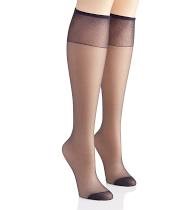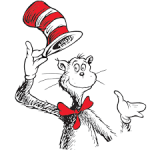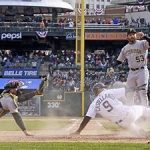The Debut
The girls’ dress code in my 1960s grade school consisted of a skirt or jumper, sturdy Oxford shoes and bobby sox or knee socks in the winter. Stockings were not permitted. Bare legs were allowed, but not a completely covered leg; at least a bare kneecap was required. Perhaps the rationale was that stockings could draw curious eyes beyond the hem of the skirt and distract classmates from the serious business of education. Tights were eventually allowed, but not sheer stockings.
Dancing school started in sixth grade. Boys wore coats and ties, girls wore little white gloves and a dress, something more formal than the shirt, skirt, and oxfords of the school outfit. That left legwear up for grabs. At the onset we all showed up with a classier version of bobby socks, perhaps with a demur bow or a ruffle flourish, but as the fall progressed classmates started to show up in sheer stockings and “party” shoes, defined as something other than sneakers or oxfords.
In the context of an innocent sixth grader, stockings became an explicit public display of emerging sexuality. The onset of menstruation was a private matter. The first bra did not come with same public announcement. Stockings signaled that girls/young ladies might be receptive to an offer to dance, a passed note in class, or under the right circumstances an invitation to a game of Spin the Bottle. As I climbed the stairs to the musty dancing school gymnasium, I could check out the legs ahead of me and see who had crossed that line.
My mother never discussed menstruation with me, which she called “the curse” as she handed me a box of Kotex. I was on my own bra-wise. However, when I told her that classmates were now wearing stockings, she took me to the local department store to pick out my first pair. She didn’t want me to fall behind.
The saleslady showed us different colors – taupe, nude, ecru. I draped a pair over my hand and held them up to the light to appreciate their shimmer and the shape outlining a stylish calf and foot. A garter belt was only a utilitarian accessory, but its lacy floral design added to the allure. The saleslady wrapped them up in tissue paper and put them in a flat square box. Over the next few days, I would peek into the box, lift the tissue paper, and touch their nylon smoothness, awaiting my public announcement.
Pantyhose
Stockings with a garter belt were soon eclipsed by the unsophisticated pantyhose. A dedicated trip to the hushed surroundings of the department store was replaced by a routine purchase at the grocery store, tossing random packages into the cart along with the cookie dough and dog food. The popular brand L’Eggs wadded their pantyhose into an egg-shaped container. There was no shimmer, no shape, only a wrinkled, characterless mass that looked a deformed fetal version of the real thing.
In my high school boarding school, the dress code still mandated skirts, but leg coverings were at the discretion of the student. Bobby sox were out – we had all crossed the line at that point – but pantyhose were unbreathable and hot. I missed the ventilation provided by the garter belt. At days’ end, the best word to describe the suffocating pantyhose environment was “pooky,” an ideal culture medium for yeast. The winter work-around was knee-high boots.
As skirts became shorter and shorter, the expanse of unprotected thighs exposed to the winter winds increased. The school allowed one concession, permission to wear pants if the thermometer dipped below 20 degrees.
Stockings thrilled me, but pantyhose awakened me to the double standard of the dress code.
Knee Highs
In the 1980s I entered the quasi professional world of my pathology residency, a job requiring a plastic apron, gloves, and a mask to protect me from spraying body fluids as I performed autopsies and processed body parts removed at surgery. Though pants were allowed, I often wore a skirt to look more professional. Even though my legs would be rarely visible under a desk or behind the autopsy counter, I felt bare legs would devalue the look. The job won out over any feminist statement.
Fortunately, skirt lengths had dropped down from mid-thigh to rest just below the knee. Knee highs were now a possibility, but only if they nestled in the crook behind the knee. This was an unrealistic stretch goal. I remember bending over to hike up the socks every few steps as I walked down the hall. I began to recognize particular brands with more spunk, but gradually transitioned to wearing pants exclusively. Weddings and formal events were a challenge, but as the decades wore on, skirt lengths dropped even further so that even saggy knee highs were adequate.
Current Day
The internet reports that sales of pantyhose have sagged over the past two decades, a result of changing dress codes and women who rise up and say, “Time to release the hostages. These damned pantyhose are giving me queefy BO.”
Michelle Obama is among them. The internet is full of pictures of her bare legs. On the women’s talk show The View, Michelle revealed that she gave up pantyhose years ago because they were “painful.”
Others consider pantyhose “make-up for the legs,” a necessity for women who don’t have Obama’s toned legs or who cannot maintain a daily shaving habit. I’ve never worn make-up and I rejected the woman’s dress code years ago, grateful I had a job that allowed me to do so without making a confrontational stink. However, I still retain a whisper of vanity. Age has taken its toll. Spider veins, various other dings and irregularities are not features I choose to display. My legs have not seen the light of day for years.
Follow Liza Blue on:Share:






















